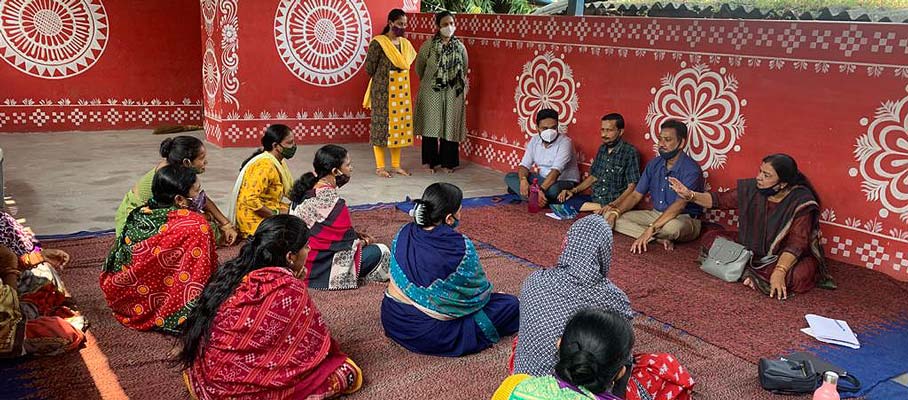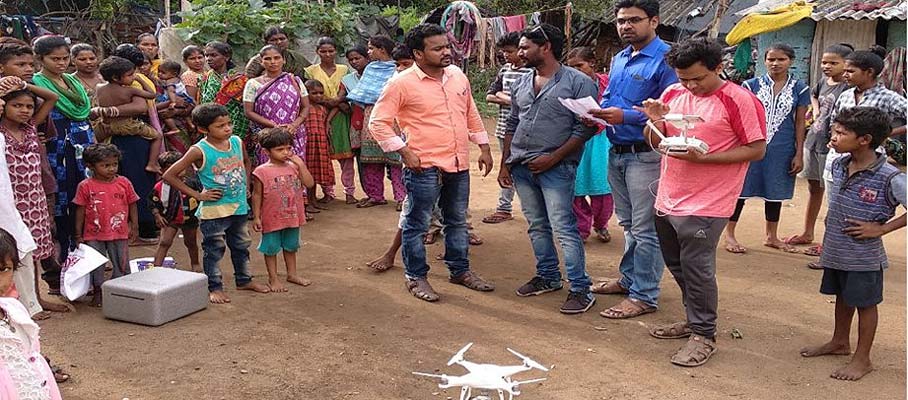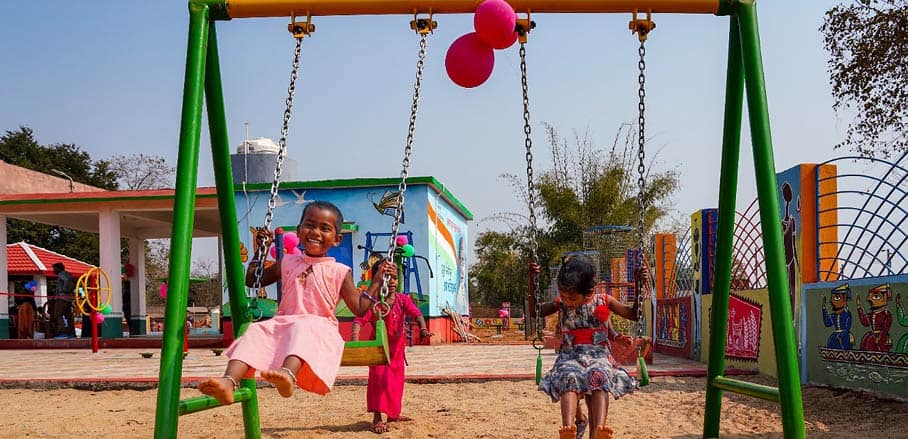JAGA MISSION – Transforming Lives, Leaderships, and Liveability
The Indian state of Odisha has initiated a slum upgrading programme that acknowledges residents as city makers. Preeti Prada Panigrahi presents its advantages and successes.
Urban growth and evolution are compounding, and cities are translating into desirable destinations for many in the rural, or peri-urban areas of the world. While human mobility is inherent and guided by an impulse to better one’s lives, this hardly happens. Most often such aspirations meet tragic ends within shanty settlements with barely humane living conditions.
Globally, about one billion people live in slums, significantly across cities of the Global South, impregnated with inequality, violent civic conflicts, and deplorable environmental quality. Not all cities encounter the same degree of problems, but urban poverty has become inevitable. Cities, as scripted time and again, are underprepared and unplanned,
Poverty alleviation measures have curated slum upgradation programmes in the past, some of which have brushed up our own understanding of how participatory democracy can be nurtured. Think, for example, of the participatory budgeting in Porto Alegre, Brazil, democratic accountability in Kampung Improvement Plans in Surabaya, Indonesia, community engagement in the self-managed urban community of Villa El Salvador, Peru, or re-distributive social justice as in the case of the Tanzania–Bondeni Voi Community Land Trust project, in Voi, Kenya.
Yet, this and many more such innovations just touch upon traditional urban systems, which are represented by urban planning, capacities, public finance, and sporadic citizen participation, continuing people to live precariously in urban sprawls.
Urban Odisha: Adapting A Pro-Poor Lens
The Indian state of Odisha, natural disasters, and poverty are often mentioned together, and that’s for a reason. A coastal state in India in the Bay of Bengal, tropical cyclones are recurring, and every time the state takes two steps towards development, the predicament of a natural calamity plays havoc and pushes it back a decade. Odisha, with an urban population of 7 million, sees 1.8 million multi-dimensionally urban poor in over 2,931 slums. Yet, historic records indicate that poverty has been declining: that’s due to the government’s basket of welfare measures with a pro-poor lens.
One of these measures is JAGA Mission, a slum titling project, which came into existence on 8th August 2017, when the State Cabinet signed off on a historic decision: the ‘Odisha Land Rights to Slum Dwellers Act’.
For the first time the narrative took a shift, slum-dwellers were no longer encroachers but upraised with the recognition to become city makers who bring in their unique skills into the city’s functioning. The Act entitled them to social benefits and urban services, starting with land tenure security. Ranking among the world’s largest slum titling exercises, it received international acclaim and recognition.
The JAGA Model
JAGA Mission has advanced, with each passing day. From land security, it has elevated to become a slum upgrading and renewal programme. For a mission of less than half a decade, JAGA has been a juggernaut of sorts, with 1.6 million urban poor having received land rights, 550 slums upgraded in-situ with basic infrastructure and services in the pilot phase, eight settlements becoming slum-free through upgrading, and 2225 slums in various stages of slum upgradation.
121 slums with 15,978 households have been identified to be located in environmentally hazardous areas and therefore are to be relocated to 26 new habitats, to be planned, designed, and built by the community themselves.
Five cities with the potential for increased migration have been converted into living labs for “slum proofing” – the process of progressing from slum upgrading to slum-free cities which have recipes against the future creation of slums.
As slums emerge out of a systemic failure, their transformation requires a triangulation of political will, committed leadership, and empowered communities that enable urban reforms to be consistent and inclusive. Odisha sees the perfect combination of these features.
Deciphered Financial Convergence
JAGA smartly demystifies and leverages financial convergence of central state grants and provisions to make urban poor initiatives effortlessly seamless. It begins with strengthening institutional and staffing capacities for identifying financial resources within city budgets and empowering city officials in their planning skills. While governments have a tendency to juxtapose power centrality JAGA Mission enables fiscal decentralisation, transparency, and accountability of funds.
Community Leadership with Women at the Forefront
JAGA has created 2,931 slum collectives known as ‘Slum Dwellers Associations’ (SDA) to build and engage with communities. Each SDA requires 50 per cent women’s representation. In doing so, we build a fourth tier of governance by fixing leadership and participation gaps in urban informal communities.

SDA leaders in Community Meetings in Odisha © JAGA Mission
Re-imagining urban democracy within the Global South has never been easy since it has to contest the state’s power hoarding with market dominance, but in Odisha the task was successful, and now the community leads the way. The State has continued to champion women empowerment as a cross-cutting agenda with an already existing cohort of seven million rural and urban self-help community collectives via Mission Shakti.
SDAs emerge as the human force driving urban infrastructure development and equally raise the quality of citizenship within informal settlements. From signing a memorandum of understanding with city governments to creating, operationalising, and maintaining community assets, SDAs are recognised as equal partners of change.
Technology Empowers Decision Making
While the state has bourgeoned, its decision making to address the opportunities and challenges brought by informality, JAGA brings scale and speed together with its spatial wisdom generated through technology tools. High-resolution drone imagery from 2,077 slums was used to locate and define slum boundaries and was GIS-mapped. Data from 1,68,141 households was collected through a door-to-door survey. On its basis, JAGA calculated household size distributions in order to analyse land ownerships and sync with housing assistance and to propel various infrastructures: basic infrastructures such as in-house water, toilets, electricity connections, trunk infrastructures such as paved roads, stormwater drainages, street lights, and social infrastructures such as community centres, open space developments, and playgrounds.

Drone survey under JAGA Mission © JAGA Mission
Empowering Communities and Platforms
The JAGA Mission has impromptu blended programmes, people, and pennies to deliver large-scale change, which is already visible. Yet, the mission needs to sync into the city’s fabric more effortlessly for greater social inclusion. Wards are a recognised reality in urban India, yet their functional efficacy is debatable. However, ward-level institutions offer themselves to be developed and strengthened into hyperlocal governance forums. This will allow ward-level infrastructure and services to be mapped and maintained.
For slum upgrading, management, and proofing exercises to be effective, we need to empower communities and equally the platforms. Our cities today need to predict and prompt actions on constructive citizen leadership at neighbourhood level to engage with city governance well and frequently. Only then can we imagine cities that are inclusive and liveable for women, children, the elderly, the disabled, and just everyone.
- JAGA MISSION – Transforming Lives, Leaderships, and Liveability - 21. April 2022
